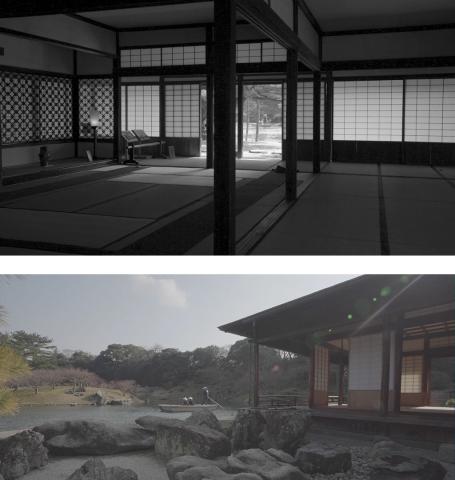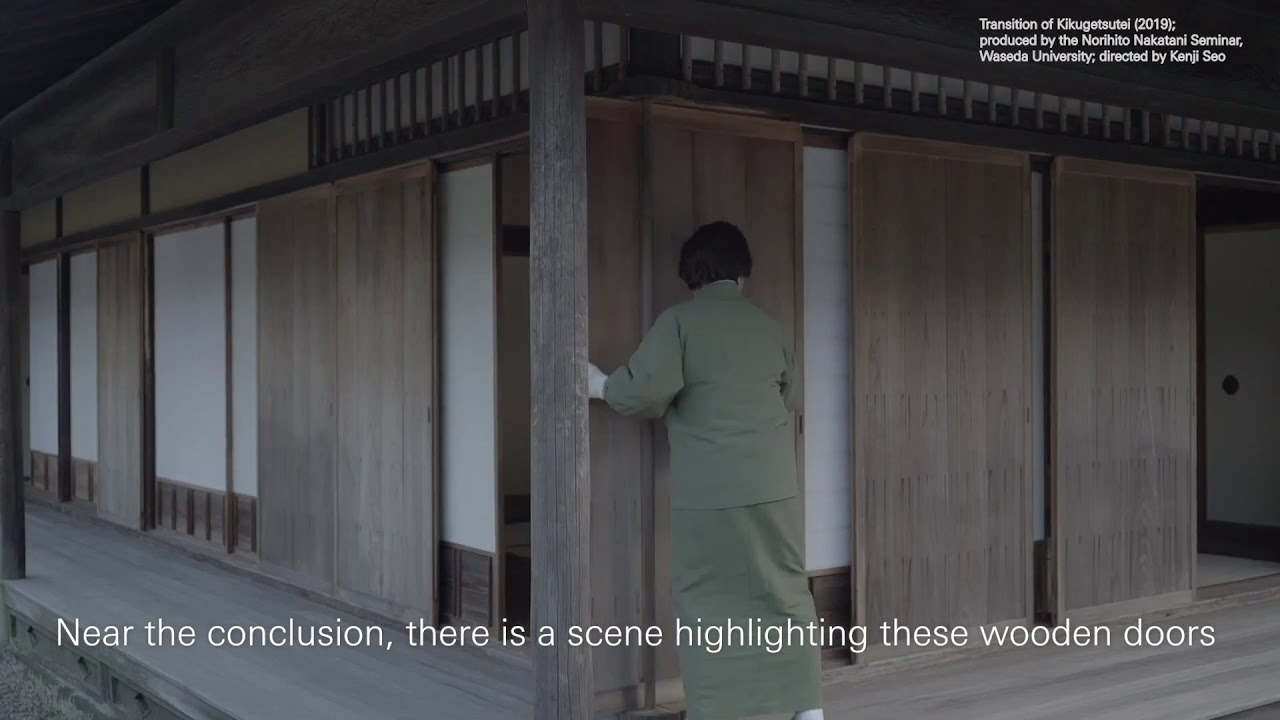Windows on Film

Still from the film “Transition of Kikugetsutei” (2019). Produced by the Norihito Nakatani Seminar, Waseda University. Directed by Kenji Seo.
In Japan's wood-based architecture, window-like components installed in the gaps between columns are referred to as 'hashirama sochi' (devices between columns). Specifically, they can take the form of walls or fixtures, such as shoji (sliding translucent screens) and fusuma (sliding partitions). The diversity and dynamism of these intercolumnar elements are considered the source of the richness of Japanese architecture. One example of this is Kikugetsutei, a teahouse which stands beside a pond in the Ritsurin Garden in Kagawa Prefecture. This short film below captures the dramatic changes that the building undergoes over the course of a day. The piece was selected for showing at the 2018 International Film Festival Rotterdam.
Reading Material
A Digital Book by Norihito Nakatani Seminar, Waseda University, Transition of Kikugetsutei; Equipment in Between is available.
Film | "Transition of Kikugetsutei"

Kikugetsutei is a teahouse located in the early modern-age daimyo (feudal lord) garden “Ritsurin Garden”, in Takamatsu city, Kagawa prefecture, Japan. The building was used for having tea or banquets, and was made in “shiho shoumen dukuri”, or designed in such a way that all four sides are designed as the front facade. Today, Kikugetsutei is open to the public, and visitors can enjoy green tea and teacakes, while admiring the open vista of the garden from inside. Learn more from WINDOW RESEARCH INSTITUTE.
Igarashi Tarō on Windows on Film


